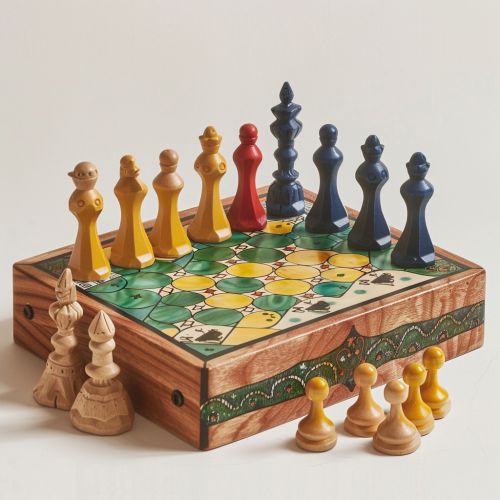Makruk
Overview
Thai Chess, or Makruk, is one of the most popular forms of chess played in Thailand. It is believed to be closer to the original game of chess, Chaturanga, which originated in India around the 6th century. Makruk shares similar rules and gameplay to traditional Western Chess, but with unique pieces and strategies that set it apart.


History
The exact origins of Makruk are not known, but it is believed to have evolved from the ancient Indian game of Chaturanga, which was the precursor to all modern forms of chess. The game was likely introduced to Thailand by Indian traders or Buddhist monks. Over time, the rules and pieces of the game were adapted to fit Thai culture and sensibilities, resulting in the unique game of Makruk.
Gameplay
Makruk is played on an 8x8 board, similar to Western Chess. However, the pieces and their movements are unique to Makruk. The game includes the following pieces: King (Khun), Queen (Met), Bishop (Khon), Knight (Ma), Rook (Rua), and Pawn (Bia). Each player starts with one King, one Queen, two Bishops, two Knights, two Rooks, and eight Pawns.
The objective of the game is to checkmate the opponent's King. This is achieved by placing the King in a position to be captured ('check') and ensuring that there is no legal move for the opponent to remove the threat of capture on the next move.
Pieces and Movement
Each piece in Makruk has its own unique movement:
- King (Khun): The King moves one square in any direction, similar to the King in Western Chess. The game is lost when the King is checkmated.
- Queen (Met): The Queen moves one step in any diagonal direction. This is a significant difference from Western Chess, where the Queen is the most powerful piece on the board.
- Bishop (Khon): The Bishop moves one step in any direction, either straight or diagonal. This is another significant difference from Western Chess, where the Bishop can move multiple squares diagonally.
- Knight (Ma): The Knight moves like the Knight in Western Chess, in an L-shape: two squares in a straight line and then one square perpendicular to that.
- Rook (Rua): The Rook moves like the Rook in Western Chess, any number of squares along a rank or file.
- Pawn (Bia): The Pawn moves and captures one step forward. Unlike in Western Chess, there is no initial two-step option, and there is no en passant rule.
Strategy
Makruk requires a deep understanding of strategy and tactics due to the unique movement of the pieces. The limited range of the Queen and Bishop makes the game slower and more defensive than Western Chess. Positioning and pawn structure play a crucial role in the game. The endgame in Makruk can be particularly complex due to promotion rules.
Promotion
In Makruk, promotion is mandatory when a Pawn reaches the sixth rank. The Pawn is promoted to a Queen. This is a significant difference from Western Chess, where promotion occurs on the eighth rank and the player can choose the piece for promotion.
Counting Rule
Makruk has a unique rule known as the 'counting rule'. If only two Kings remain on the board, the game is a draw. If a player has a King and a Rook against a lone King, they have to checkmate the opponent within 8 moves, otherwise, the game is a draw. The number of moves increases if the player has more pieces.
See Also
- Chess - Shogi - Xiangqi - Chaturanga
